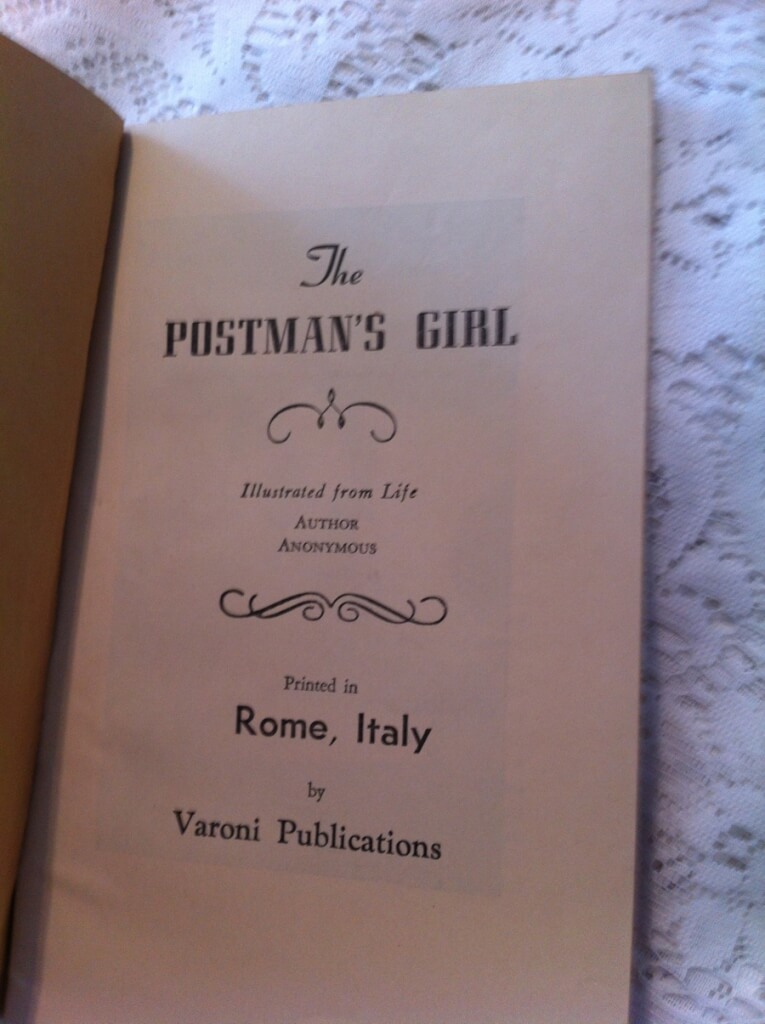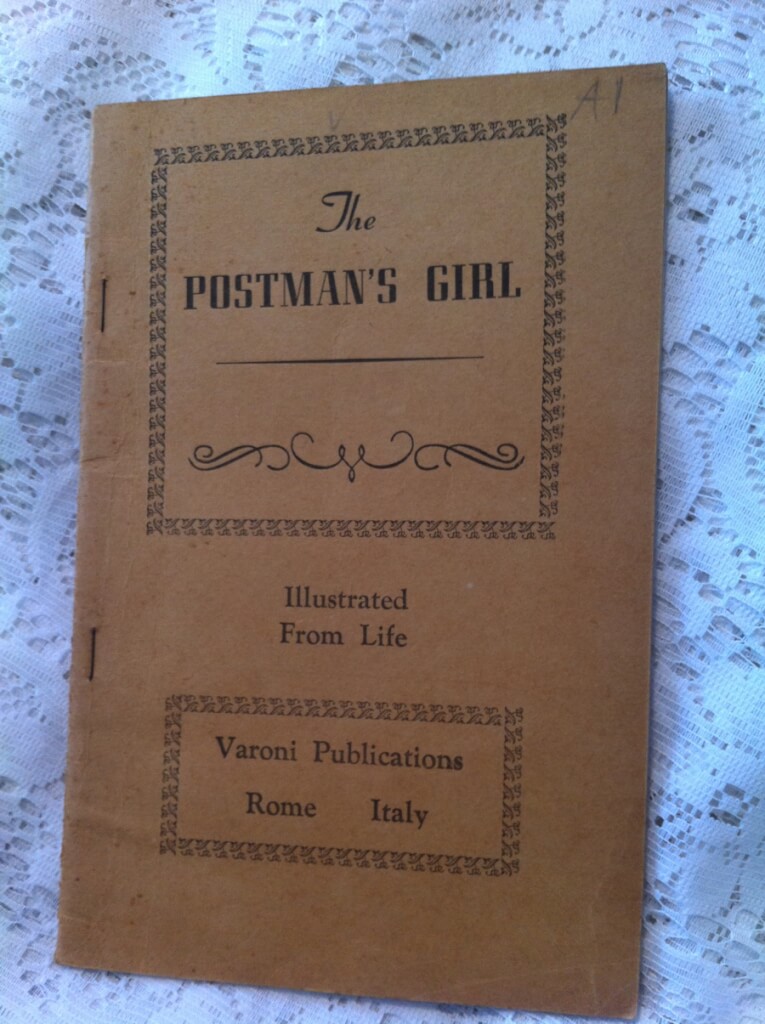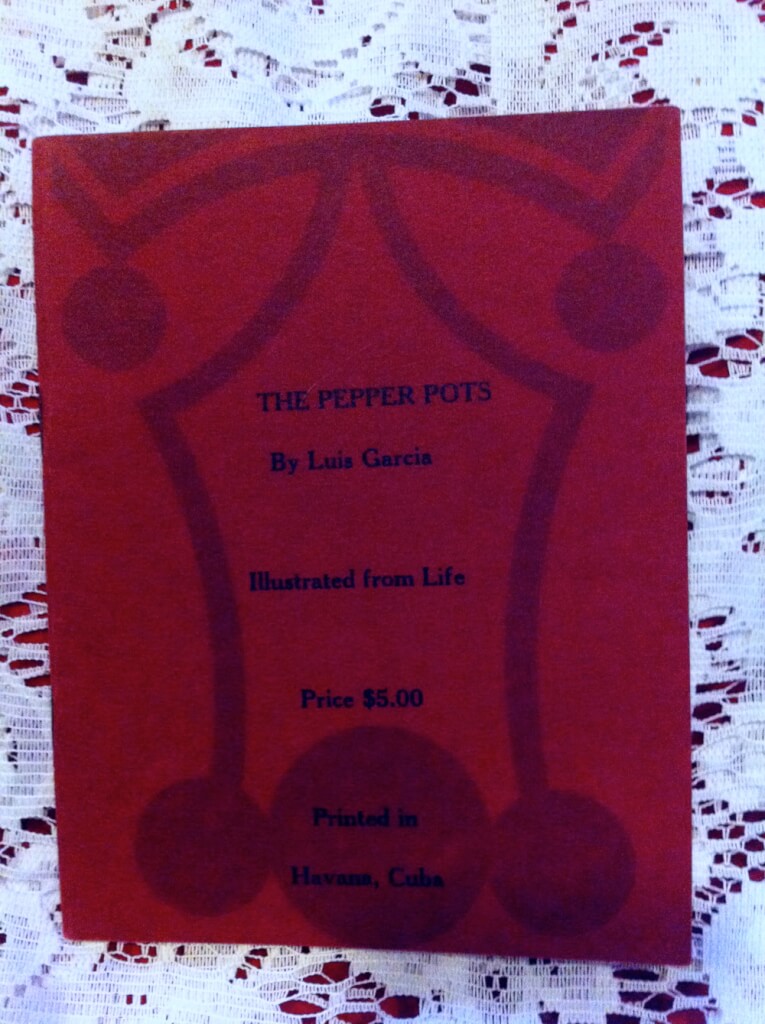-
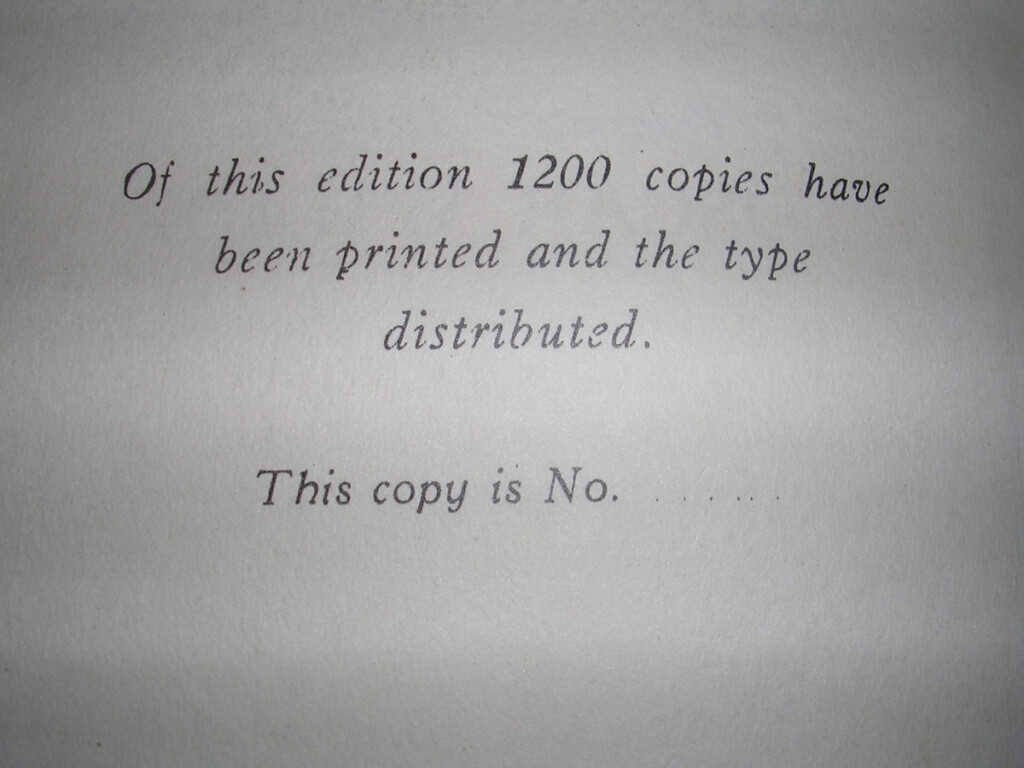
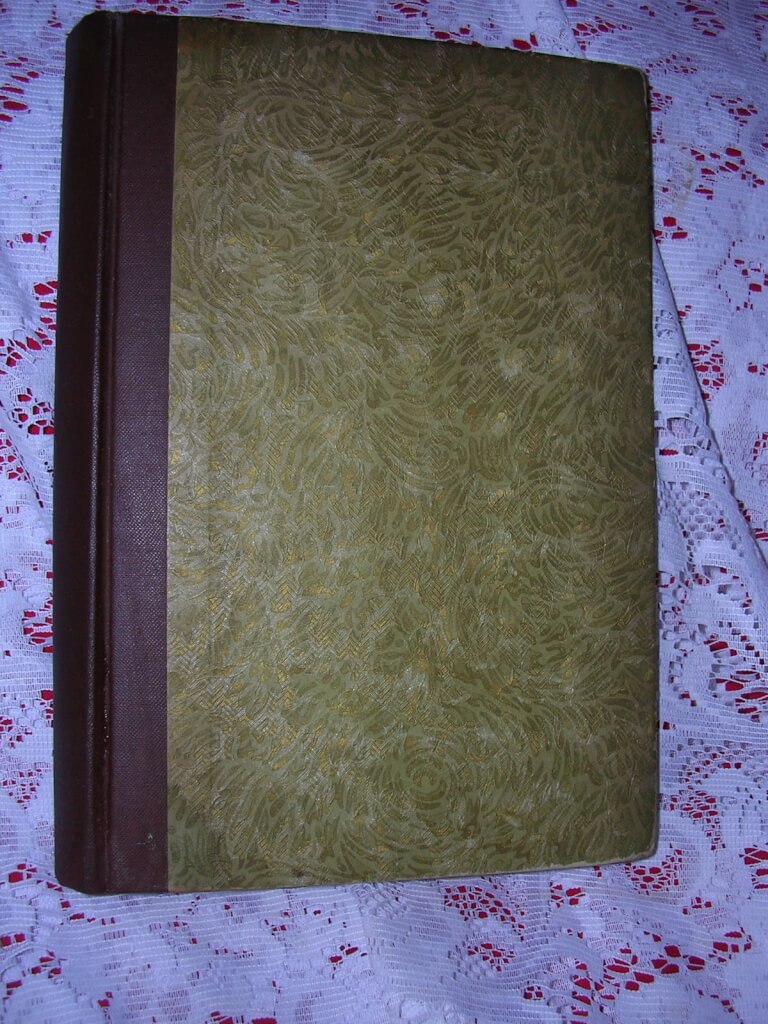 The Satyricon of Petronius Arbiter, Gaius Petronius, trans. ascribed to Oscar Wilde (Privately Printed, 1928, Limited Edition of 1200 unnumberd) 9" X 6 1/4", 236pp, Brown spine with gilt titles (mostly worn off), decorated boards with green and gilt. Deckle bottom and fore edges, top edge inked purple. Fair copy, spine cocked, binding and boards good, corners worn. Satyricon (or Satyrica) is a Latin work of fiction in a mixture of prose and poetry (prosimetrum). It is believed to have been written by Gaius Petronius, though the manuscript tradition identifies the author as a certain Titus Petronius. Classical scholars often describe it as a "Roman novel", without necessarily implying continuity with the modern literary form. The surviving portions of the text detail the misadventures of the narrator, Encolpius, and his lover, a handsome sixteen-year-old boy named Giton. Throughout the novel, Encolpius has a hard time keeping his lover faithful to him as he is constantly being enticed away by others. Encolpius's friend Ascyltus (who seems to have previously been in a relationship with Encolpius) is another major character. It is a rare example of a Roman novel, the only other surviving example (quite different in style and plot) being Metamorphoses of Apuleius. It is also extremely important evidence for the reconstruction of what everyday life must have been like for the lower classes during the early Roman Empire.
The Satyricon of Petronius Arbiter, Gaius Petronius, trans. ascribed to Oscar Wilde (Privately Printed, 1928, Limited Edition of 1200 unnumberd) 9" X 6 1/4", 236pp, Brown spine with gilt titles (mostly worn off), decorated boards with green and gilt. Deckle bottom and fore edges, top edge inked purple. Fair copy, spine cocked, binding and boards good, corners worn. Satyricon (or Satyrica) is a Latin work of fiction in a mixture of prose and poetry (prosimetrum). It is believed to have been written by Gaius Petronius, though the manuscript tradition identifies the author as a certain Titus Petronius. Classical scholars often describe it as a "Roman novel", without necessarily implying continuity with the modern literary form. The surviving portions of the text detail the misadventures of the narrator, Encolpius, and his lover, a handsome sixteen-year-old boy named Giton. Throughout the novel, Encolpius has a hard time keeping his lover faithful to him as he is constantly being enticed away by others. Encolpius's friend Ascyltus (who seems to have previously been in a relationship with Encolpius) is another major character. It is a rare example of a Roman novel, the only other surviving example (quite different in style and plot) being Metamorphoses of Apuleius. It is also extremely important evidence for the reconstruction of what everyday life must have been like for the lower classes during the early Roman Empire. -
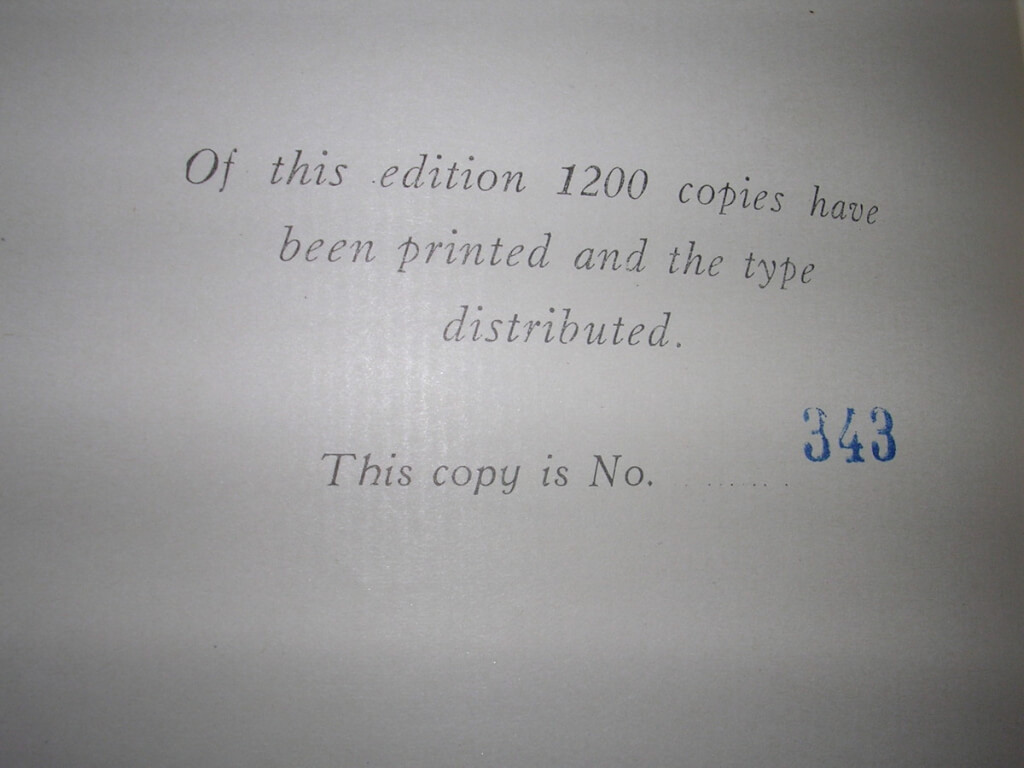
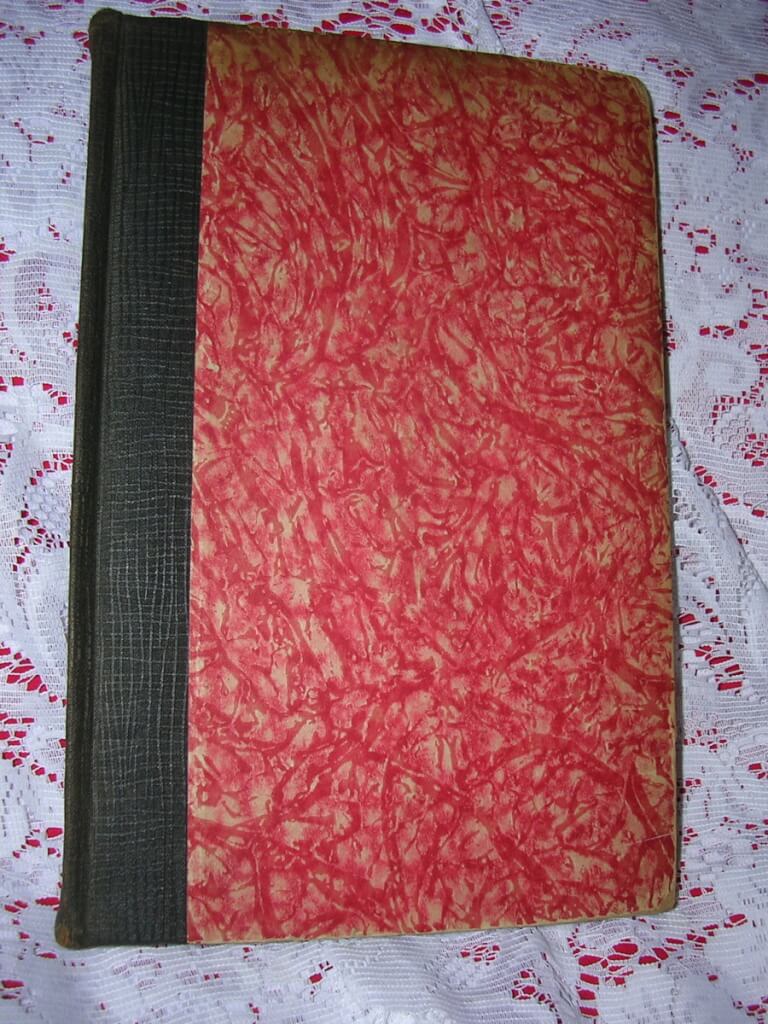 The Satyricon of Petronius Arbiter, Gaius Petronius, trans. ascribed to Oscar Wilde (Privately Printed, 1928, Limited Edition 343/1200 stamped in ink) 9" X 6 1/4", 236pp, black spine with gilt titles (mostly worn off), decorated red boards. Fair copy, boards worn, binding good. Front board loose but holding. Satyricon (or Satyrica) is a Latin work of fiction in a mixture of prose and poetry (prosimetrum). It is believed to have been written by Gaius Petronius, though the manuscript tradition identifies the author as a certain Titus Petronius. Classical scholars often describe it as a "Roman novel", without necessarily implying continuity with the modern literary form. The surviving portions of the text detail the misadventures of the narrator, Encolpius, and his lover, a handsome sixteen-year-old boy named Giton. Throughout the novel, Encolpius has a hard time keeping his lover faithful to him as he is constantly being enticed away by others. Encolpius's friend Ascyltus (who seems to have previously been in a relationship with Encolpius) is another major character. It is a rare example of a Roman novel, the only other surviving example (quite different in style and plot) being Metamorphoses of Apuleius. It is also extremely important evidence for the reconstruction of what everyday life must have been like for the lower classes during the early Roman Empire.
The Satyricon of Petronius Arbiter, Gaius Petronius, trans. ascribed to Oscar Wilde (Privately Printed, 1928, Limited Edition 343/1200 stamped in ink) 9" X 6 1/4", 236pp, black spine with gilt titles (mostly worn off), decorated red boards. Fair copy, boards worn, binding good. Front board loose but holding. Satyricon (or Satyrica) is a Latin work of fiction in a mixture of prose and poetry (prosimetrum). It is believed to have been written by Gaius Petronius, though the manuscript tradition identifies the author as a certain Titus Petronius. Classical scholars often describe it as a "Roman novel", without necessarily implying continuity with the modern literary form. The surviving portions of the text detail the misadventures of the narrator, Encolpius, and his lover, a handsome sixteen-year-old boy named Giton. Throughout the novel, Encolpius has a hard time keeping his lover faithful to him as he is constantly being enticed away by others. Encolpius's friend Ascyltus (who seems to have previously been in a relationship with Encolpius) is another major character. It is a rare example of a Roman novel, the only other surviving example (quite different in style and plot) being Metamorphoses of Apuleius. It is also extremely important evidence for the reconstruction of what everyday life must have been like for the lower classes during the early Roman Empire. -
 The Romance of Chastisement; or Revelations of the School and Bedroom | by and expert, anonymous (Tremont Publishing Company, Boston, 1876) 8" X 5.5", 150pp, green boards with blindstamp decorations, gilt titles on the spine, red inked edges, just good condition, bumping and chipping on corners and spine, red frame decoration throughout book. The Romance of Chastisement is a Victorian pornographic collection on the theme of flagellation by St George Stock (a probable pseudonym, also credited with The Whippingham Papers). It was originally published by John Camden Hotten in 1866. It was reprinted by William Lazenby in 1883 and again by Charles Carrington in 1902 as The Magnetism of the Rod or the Revelations of Miss Darcy. This is the rare edition published in Boston, USA.
The Romance of Chastisement; or Revelations of the School and Bedroom | by and expert, anonymous (Tremont Publishing Company, Boston, 1876) 8" X 5.5", 150pp, green boards with blindstamp decorations, gilt titles on the spine, red inked edges, just good condition, bumping and chipping on corners and spine, red frame decoration throughout book. The Romance of Chastisement is a Victorian pornographic collection on the theme of flagellation by St George Stock (a probable pseudonym, also credited with The Whippingham Papers). It was originally published by John Camden Hotten in 1866. It was reprinted by William Lazenby in 1883 and again by Charles Carrington in 1902 as The Magnetism of the Rod or the Revelations of Miss Darcy. This is the rare edition published in Boston, USA. -
 The Rahnghild Edition of: Venus in Furs, Leopold von Sacher-Masoch, illustrated by Rahnghild [Susan Inez Aguerra?] (William Faro, Inc [Samuel Roth, New York], 1932) 6.5"x9.25", 240pp, brown cloth boards with pasted title on spine, some soiling on front paste-down but overall a clean copy, beautiful art-deco illustrations throughout. Venus in Furs (German: Venus im Pelz) is a novella by Leopold Ritter von Sacher-Masoch (1836-1895), an Austrian writer and journalist. It is now his best known work and because of its themes the term masochism is derived from his name, coined by the Austrian psychiatrist, Krafft-Ebing. The novel was to be part of an epic series that Sacher-Masoch envisioned called Legacy of Cain. Venus in Furs was part of Love, the first volume of the series. It was published in 1870. The novel draws themes, like female dominance and sadomasochism, and character inspiration heavily from Sacher-Masoch’s own life. Wanda von Dunajew, the novel’s central female character, was modelled after his mistress Baroness Fanny Pistor. In December 1869 the two signed a contract making him her slave for a period of 6 months. In 1873, after the publication of Venus in Furs, Sacher-Masoch married Aurora von Rümelin who he pressured to continue the lifestyle he wrote about in his book. After 10 years they divorced. Rümelin, using the pseudonym of the books title character, “Wanda von Dunajew”, wrote Meine Lebensbeichte (My Life Confession) published in 1906. It detailed Sacher-Masoch’s private life and her relationship with him. During his lifetime, Sacher-Masoch was well known as a man of letters, a utopian thinker who espoused socialist and humanist ideals in his fiction and non-fiction. Most of his works remain untranslated into English. Until recently, his novel Venus in Furs was his only book commonly available in English. Samuel Roth (1893-1974) was an infamous American publisher and writer. He had a bookstore, Poetry Shop in the West Village section of Greenwich Villiage. He was the plaintiff in Roth v. United States (1957), which was a key Supreme Court ruling on freedom of sexual expression. He was also repeatedly convicted for publishing and distributing obscene material.
The Rahnghild Edition of: Venus in Furs, Leopold von Sacher-Masoch, illustrated by Rahnghild [Susan Inez Aguerra?] (William Faro, Inc [Samuel Roth, New York], 1932) 6.5"x9.25", 240pp, brown cloth boards with pasted title on spine, some soiling on front paste-down but overall a clean copy, beautiful art-deco illustrations throughout. Venus in Furs (German: Venus im Pelz) is a novella by Leopold Ritter von Sacher-Masoch (1836-1895), an Austrian writer and journalist. It is now his best known work and because of its themes the term masochism is derived from his name, coined by the Austrian psychiatrist, Krafft-Ebing. The novel was to be part of an epic series that Sacher-Masoch envisioned called Legacy of Cain. Venus in Furs was part of Love, the first volume of the series. It was published in 1870. The novel draws themes, like female dominance and sadomasochism, and character inspiration heavily from Sacher-Masoch’s own life. Wanda von Dunajew, the novel’s central female character, was modelled after his mistress Baroness Fanny Pistor. In December 1869 the two signed a contract making him her slave for a period of 6 months. In 1873, after the publication of Venus in Furs, Sacher-Masoch married Aurora von Rümelin who he pressured to continue the lifestyle he wrote about in his book. After 10 years they divorced. Rümelin, using the pseudonym of the books title character, “Wanda von Dunajew”, wrote Meine Lebensbeichte (My Life Confession) published in 1906. It detailed Sacher-Masoch’s private life and her relationship with him. During his lifetime, Sacher-Masoch was well known as a man of letters, a utopian thinker who espoused socialist and humanist ideals in his fiction and non-fiction. Most of his works remain untranslated into English. Until recently, his novel Venus in Furs was his only book commonly available in English. Samuel Roth (1893-1974) was an infamous American publisher and writer. He had a bookstore, Poetry Shop in the West Village section of Greenwich Villiage. He was the plaintiff in Roth v. United States (1957), which was a key Supreme Court ruling on freedom of sexual expression. He was also repeatedly convicted for publishing and distributing obscene material. -
 The Ragionamenti or dialogues of the devine Pietro Aretino, Pietro Aretino, trans. Isidore Liseux (Isidore Liseux, Paris, 1889) 8" X 6", 3 volumes, xxxv+83+89pp, 100+134pp, 129+138pp, half-bound brown morocco over marbled boards, gilt titles on spines, top-edge gilt, other edges deckled, each book has the ex-libris of Boies Penrose II Pietro Aretino (1492-1556) was one of the most important figures in Italian Renaissance literature, and certainly the most controversial. Condemned by some as a pornographer, his infamy was due largely to his use of explicit sexuality and the vulgar tongue of ordinary speech in much of his work. Dialogues center around a conversation between two rather frank, experienced, and sharp-tongued women on the topic of women’s occupations. We learn that at the time there were only three: wife, whore, or nun. Their discussion is a rollicking account of the advantages, perils, and pleasures each profession offers. Not only was Dialogues the first erotic book in the Christian world to be written in the common vernacular, it was but one of the few to describe the obscenity of commercial love, and is thus a cornerstone of both Italian literature and Counter-Renaissance vigour. First dialog: The Life of Nuns Second dialog: The Life of Married Women Third dialog: The Life of Courtesans Fourth dialog: The Education of Pippa Fifth dialog: The Wiles of Men Sixth dialog: The Bawd’s Trade Isidore Liseux (1835-1894) was a French bibliophile and publisher of erotica and curiosa. His publications were mostly rare texts of 16th to 18th century authors, hard to find and little known books which were usually translated and annotated by his friend and associate Alcide Bonneau or by Liseux himself. Liseux and Bonneau, both ex-priests, knew each other since seminary. His books were published in small numbers, on high quality paper, and with excellent typography. His usual printers were Claude Motteroz, Antoine Bécus, and later Charles Unsinger. Liseux’s books were published openly as the climate was more permissive in Paris at the time. His books were so well regarded that pirates of his books and even unrelated books bearing his imprint with a false date were published clandestinely into the 20th century. French poet, Guillaume Apollinaire wrote: “The publications of Liseux are more and more sought after because they are correct, beautiful and rare.” (Le flaneur des deux rives, 1918). Time Magazine, Monday, May 11, 1936 Youngish Pennsylvanians whose Progressive fathers frightened them with the name of BOIES PENROSE a quarter century ago could look forward last week to bemusing their own children with that great name some day. In Philadelphia Boies Penrose II, nephew of Pennsylvania's longtime (1897-1921) Senator and Republican boss, received a Republican nomination to Congress in last week's primary. A rich and cultured Harvard man like his late uncle, 34-year-old Boies II has hitherto devoted himself to scholarship and society, is the owner of a notable collection of etchings, engravings, manuscripts and rare books. When he decided few months ago to make a career for himself in politics, leaders of Philadelphia's Republican machine warmly welcomed a young man with so potent a name, so fat a pocketbook. Candidate Penrose, who owns a 125-acre estate on the Main Line at swank Devon where he takes his own and neighbors' small children for rides on his mile-long miniature railroad, promptly established a residence in Philadelphia by renting an apartment, the address of which he is constantly forgetting.— "My platform," he announced in fastidious Bostonese, "will be the Horse & Buggy, or Save the Constitution." In the Republican split of 1912 Boies Penrose temporarily lost his State leadership to the Bull Moose faction, which included an ardent Young Roosevelt worshipper named Gifford Pinchot. While one set of Philadelphia voters was lifting the name of Penrose up last week, another group was setting the name of Pinchot down. In a district inhabited largely by factory workers whose cause she has championed many a time on the picket line, red-haired Mrs. Gifford Pinchot made her third race for a Republican nomination to the House, suffered her third defeat.
The Ragionamenti or dialogues of the devine Pietro Aretino, Pietro Aretino, trans. Isidore Liseux (Isidore Liseux, Paris, 1889) 8" X 6", 3 volumes, xxxv+83+89pp, 100+134pp, 129+138pp, half-bound brown morocco over marbled boards, gilt titles on spines, top-edge gilt, other edges deckled, each book has the ex-libris of Boies Penrose II Pietro Aretino (1492-1556) was one of the most important figures in Italian Renaissance literature, and certainly the most controversial. Condemned by some as a pornographer, his infamy was due largely to his use of explicit sexuality and the vulgar tongue of ordinary speech in much of his work. Dialogues center around a conversation between two rather frank, experienced, and sharp-tongued women on the topic of women’s occupations. We learn that at the time there were only three: wife, whore, or nun. Their discussion is a rollicking account of the advantages, perils, and pleasures each profession offers. Not only was Dialogues the first erotic book in the Christian world to be written in the common vernacular, it was but one of the few to describe the obscenity of commercial love, and is thus a cornerstone of both Italian literature and Counter-Renaissance vigour. First dialog: The Life of Nuns Second dialog: The Life of Married Women Third dialog: The Life of Courtesans Fourth dialog: The Education of Pippa Fifth dialog: The Wiles of Men Sixth dialog: The Bawd’s Trade Isidore Liseux (1835-1894) was a French bibliophile and publisher of erotica and curiosa. His publications were mostly rare texts of 16th to 18th century authors, hard to find and little known books which were usually translated and annotated by his friend and associate Alcide Bonneau or by Liseux himself. Liseux and Bonneau, both ex-priests, knew each other since seminary. His books were published in small numbers, on high quality paper, and with excellent typography. His usual printers were Claude Motteroz, Antoine Bécus, and later Charles Unsinger. Liseux’s books were published openly as the climate was more permissive in Paris at the time. His books were so well regarded that pirates of his books and even unrelated books bearing his imprint with a false date were published clandestinely into the 20th century. French poet, Guillaume Apollinaire wrote: “The publications of Liseux are more and more sought after because they are correct, beautiful and rare.” (Le flaneur des deux rives, 1918). Time Magazine, Monday, May 11, 1936 Youngish Pennsylvanians whose Progressive fathers frightened them with the name of BOIES PENROSE a quarter century ago could look forward last week to bemusing their own children with that great name some day. In Philadelphia Boies Penrose II, nephew of Pennsylvania's longtime (1897-1921) Senator and Republican boss, received a Republican nomination to Congress in last week's primary. A rich and cultured Harvard man like his late uncle, 34-year-old Boies II has hitherto devoted himself to scholarship and society, is the owner of a notable collection of etchings, engravings, manuscripts and rare books. When he decided few months ago to make a career for himself in politics, leaders of Philadelphia's Republican machine warmly welcomed a young man with so potent a name, so fat a pocketbook. Candidate Penrose, who owns a 125-acre estate on the Main Line at swank Devon where he takes his own and neighbors' small children for rides on his mile-long miniature railroad, promptly established a residence in Philadelphia by renting an apartment, the address of which he is constantly forgetting.— "My platform," he announced in fastidious Bostonese, "will be the Horse & Buggy, or Save the Constitution." In the Republican split of 1912 Boies Penrose temporarily lost his State leadership to the Bull Moose faction, which included an ardent Young Roosevelt worshipper named Gifford Pinchot. While one set of Philadelphia voters was lifting the name of Penrose up last week, another group was setting the name of Pinchot down. In a district inhabited largely by factory workers whose cause she has championed many a time on the picket line, red-haired Mrs. Gifford Pinchot made her third race for a Republican nomination to the House, suffered her third defeat. -
 The Ragionamenti or dialogues of the devine Pietro Aretino, Pietro Aretino, trans. Isidore Liseux (Isidore Liseux, Paris, 1889) 8.25" X 6", 6 volumes, xxxv+83pp, 89pp, 100pp, 134pp, 129pp, 138pp, original publishers paper wraps in just good condition with chipping at the top and bottom of the spine on some volumes, internal pages in mint condition, protective cover with green boards in fair condition, some joints loose and cloth peeling away, edges deckled, ex-libris of E. M. Schnadig Pietro Aretino (1492-1556) was one of the most important figures in Italian Renaissance literature, and certainly the most controversial. Condemned by some as a pornographer, his infamy was due largely to his use of explicit sexuality and the vulgar tongue of ordinary speech in much of his work. Dialogues center around a conversation between two rather frank, experienced, and sharp-tongued women on the topic of women’s occupations. We learn that at the time there were only three: wife, whore, or nun. Their discussion is a rollicking account of the advantages, perils, and pleasures each profession offers. Not only was Dialogues the first erotic book in the Christian world to be written in the common vernacular, it was but one of the few to describe the obscenity of commercial love, and is thus a cornerstone of both Italian literature and Counter-Renaissance vigour. First dialog: The Life of Nuns Second dialog: The Life of Married Women Third dialog: The Life of Courtesans Fourth dialog: The Education of Pippa Fifth dialog: The Wiles of Men Sixth dialog: The Bawd’s Trade Isidore Liseux (1835-1894) was a French bibliophile and publisher of erotica and curiosa. His publications were mostly rare texts of 16th to 18th century authors, hard to find and little known books which were usually translated and annotated by his friend and associate Alcide Bonneau or by Liseux himself. Liseux and Bonneau, both ex-priests, knew each other since seminary. His books were published in small numbers, on high quality paper, and with excellent typography. His usual printers were Claude Motteroz, Antoine Bécus, and later Charles Unsinger. Liseux’s books were published openly as the climate was more permissive in Paris at the time. His books were so well regarded that pirates of his books and even unrelated books bearing his imprint with a false date were published clandestinely into the 20th century. French poet, Guillaume Apollinaire wrote: “The publications of Liseux are more and more sought after because they are correct, beautiful and rare.” (Le flaneur des deux rives, 1918).
The Ragionamenti or dialogues of the devine Pietro Aretino, Pietro Aretino, trans. Isidore Liseux (Isidore Liseux, Paris, 1889) 8.25" X 6", 6 volumes, xxxv+83pp, 89pp, 100pp, 134pp, 129pp, 138pp, original publishers paper wraps in just good condition with chipping at the top and bottom of the spine on some volumes, internal pages in mint condition, protective cover with green boards in fair condition, some joints loose and cloth peeling away, edges deckled, ex-libris of E. M. Schnadig Pietro Aretino (1492-1556) was one of the most important figures in Italian Renaissance literature, and certainly the most controversial. Condemned by some as a pornographer, his infamy was due largely to his use of explicit sexuality and the vulgar tongue of ordinary speech in much of his work. Dialogues center around a conversation between two rather frank, experienced, and sharp-tongued women on the topic of women’s occupations. We learn that at the time there were only three: wife, whore, or nun. Their discussion is a rollicking account of the advantages, perils, and pleasures each profession offers. Not only was Dialogues the first erotic book in the Christian world to be written in the common vernacular, it was but one of the few to describe the obscenity of commercial love, and is thus a cornerstone of both Italian literature and Counter-Renaissance vigour. First dialog: The Life of Nuns Second dialog: The Life of Married Women Third dialog: The Life of Courtesans Fourth dialog: The Education of Pippa Fifth dialog: The Wiles of Men Sixth dialog: The Bawd’s Trade Isidore Liseux (1835-1894) was a French bibliophile and publisher of erotica and curiosa. His publications were mostly rare texts of 16th to 18th century authors, hard to find and little known books which were usually translated and annotated by his friend and associate Alcide Bonneau or by Liseux himself. Liseux and Bonneau, both ex-priests, knew each other since seminary. His books were published in small numbers, on high quality paper, and with excellent typography. His usual printers were Claude Motteroz, Antoine Bécus, and later Charles Unsinger. Liseux’s books were published openly as the climate was more permissive in Paris at the time. His books were so well regarded that pirates of his books and even unrelated books bearing his imprint with a false date were published clandestinely into the 20th century. French poet, Guillaume Apollinaire wrote: “The publications of Liseux are more and more sought after because they are correct, beautiful and rare.” (Le flaneur des deux rives, 1918). -
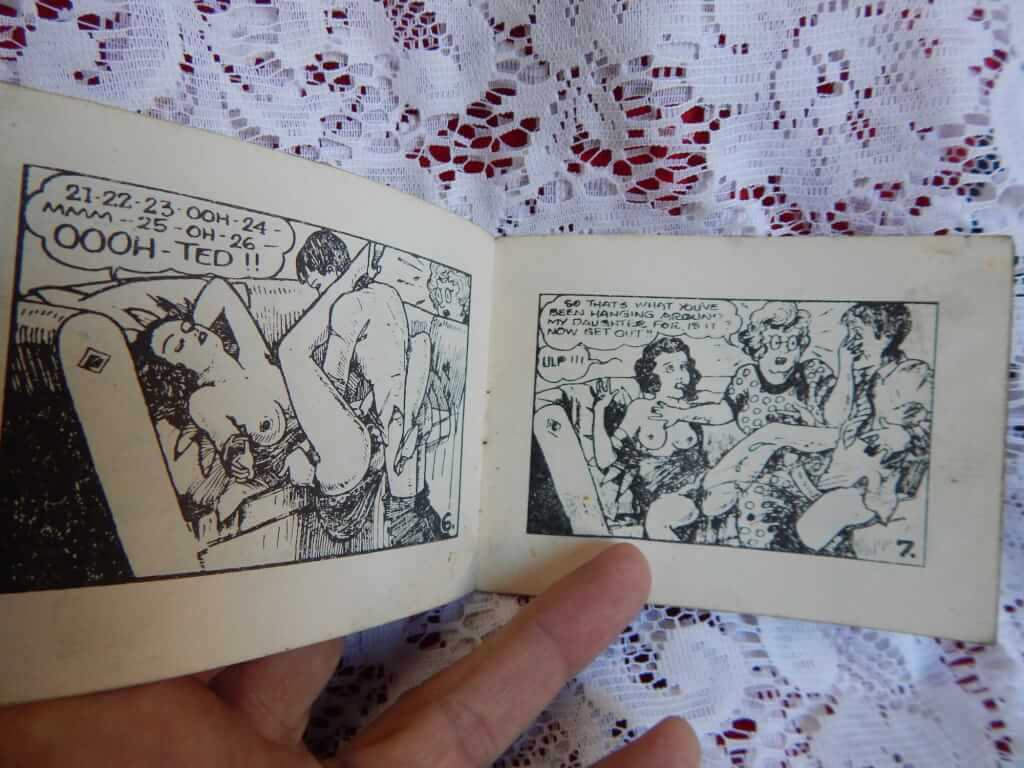
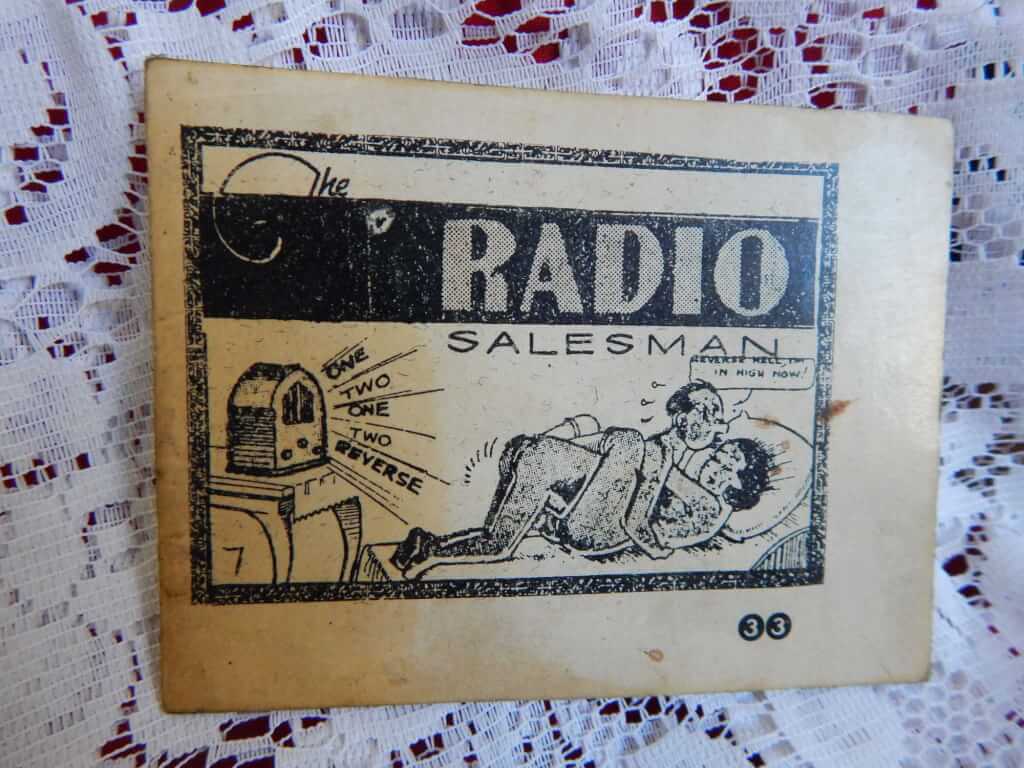 The Radio Salesman, (np. nd.) 4.5" x 3", 8pp., pamphlet, stapled and taped Tijuana bibles (also known as eight-pagers, bluesies, gray-backs, Jiggs-and-Maggie books, jo-jo books, Tillie-and-Mac books, and two-by-fours) were little pornographic comic books produced in the United States from the 1920s to the early 1960s.
The Radio Salesman, (np. nd.) 4.5" x 3", 8pp., pamphlet, stapled and taped Tijuana bibles (also known as eight-pagers, bluesies, gray-backs, Jiggs-and-Maggie books, jo-jo books, Tillie-and-Mac books, and two-by-fours) were little pornographic comic books produced in the United States from the 1920s to the early 1960s. -
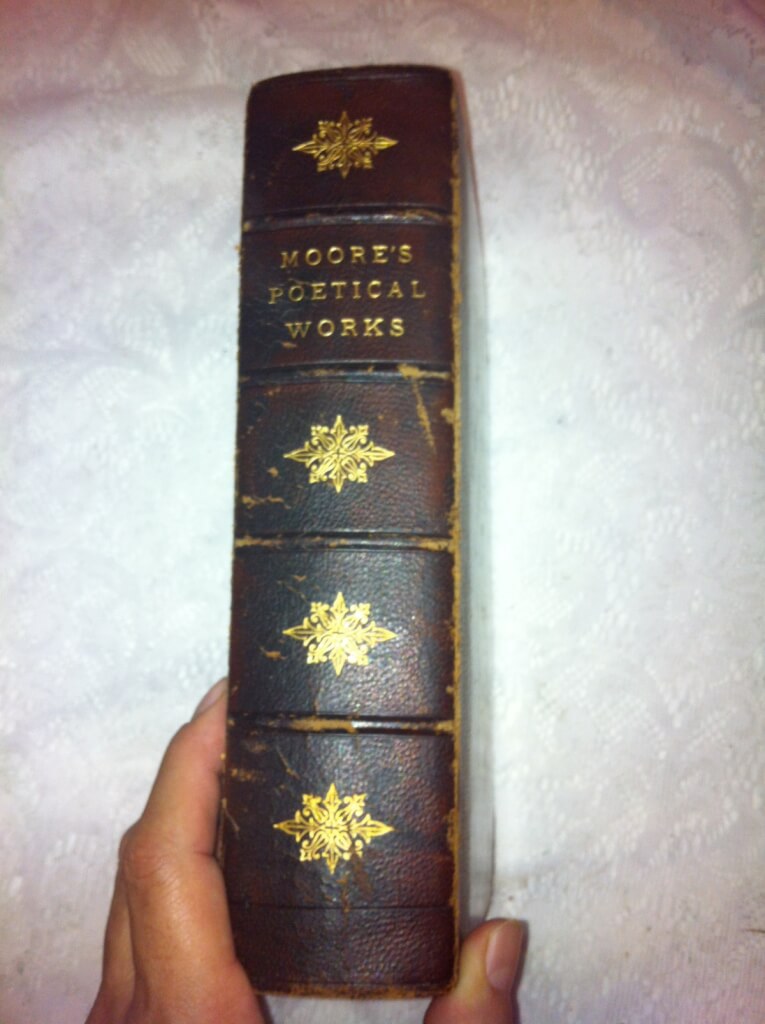
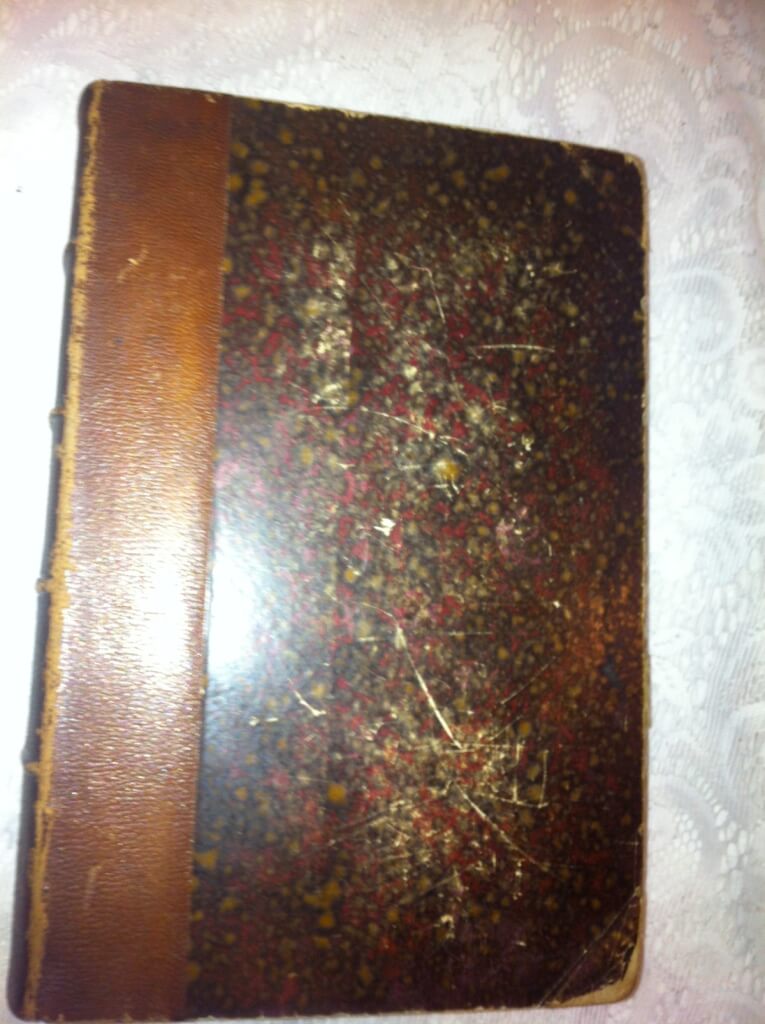 The Poetical Works of Thomas Moore, Thomas Moore (Oliver S. Felt, New York, nd. [c.1860]) 9.5" X 6.5", 776pp., half leather, 4 raised bands. 8 volumes in one. Beautiful steel engravings throughout. Fair condition, binding good, frontispiece missing. Thomas Moore (1779 - 1852) is considered Ireland's "National Bard". He was a poet, singer, songwriter, and entertainer. He was responsible, with John Murray, for burning Lord Byron's memoirs after his death.
The Poetical Works of Thomas Moore, Thomas Moore (Oliver S. Felt, New York, nd. [c.1860]) 9.5" X 6.5", 776pp., half leather, 4 raised bands. 8 volumes in one. Beautiful steel engravings throughout. Fair condition, binding good, frontispiece missing. Thomas Moore (1779 - 1852) is considered Ireland's "National Bard". He was a poet, singer, songwriter, and entertainer. He was responsible, with John Murray, for burning Lord Byron's memoirs after his death. -
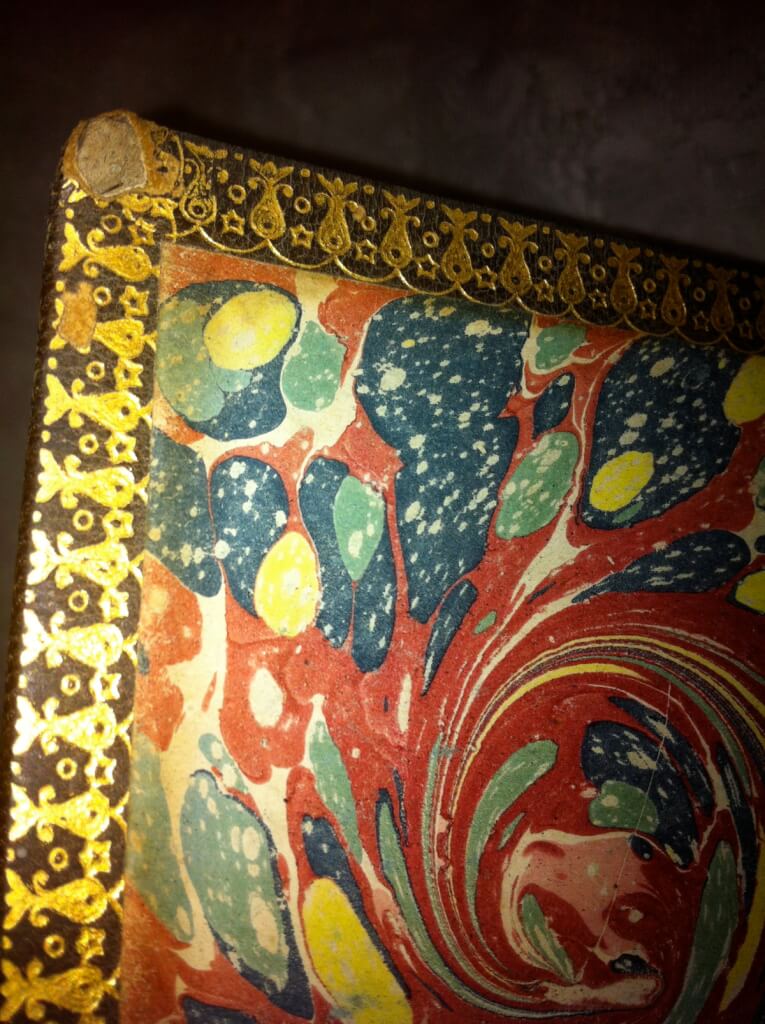
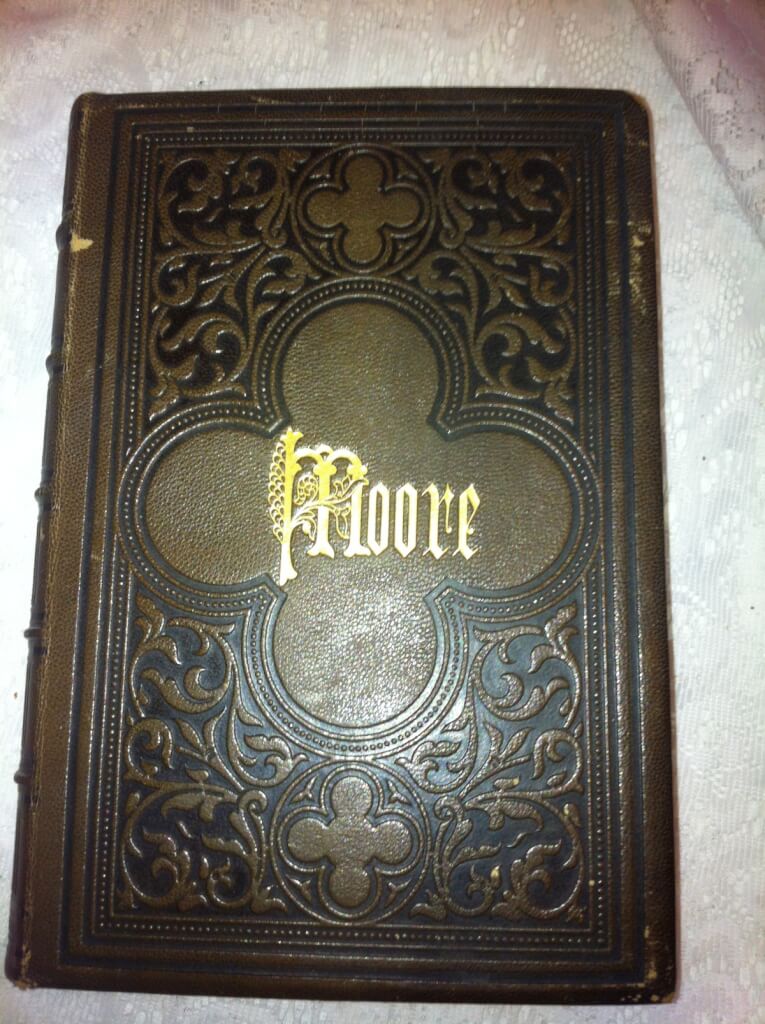 The Poetical Works of Thomas Moore, Thomas Moore (Oliver S. Felt, New York, nd. [c.1860]) 9.5" X 6.5", 776pp., 8 volumes in one. Full leather binding, tooled leather, gilt lettering and decorations, 5 raised bands on spine, marbled end papers, gilt edges. Beautiful steel engravings throughout with tissue guards. Thomas Moore (1779 _ 1852) is considered Ireland's "National Bard". He was a poet, singer, songwriter, and entertainer. He was responsible, with John Murray, for burning Lord Byron's memoirs after his death.
The Poetical Works of Thomas Moore, Thomas Moore (Oliver S. Felt, New York, nd. [c.1860]) 9.5" X 6.5", 776pp., 8 volumes in one. Full leather binding, tooled leather, gilt lettering and decorations, 5 raised bands on spine, marbled end papers, gilt edges. Beautiful steel engravings throughout with tissue guards. Thomas Moore (1779 _ 1852) is considered Ireland's "National Bard". He was a poet, singer, songwriter, and entertainer. He was responsible, with John Murray, for burning Lord Byron's memoirs after his death. -
Out of stock

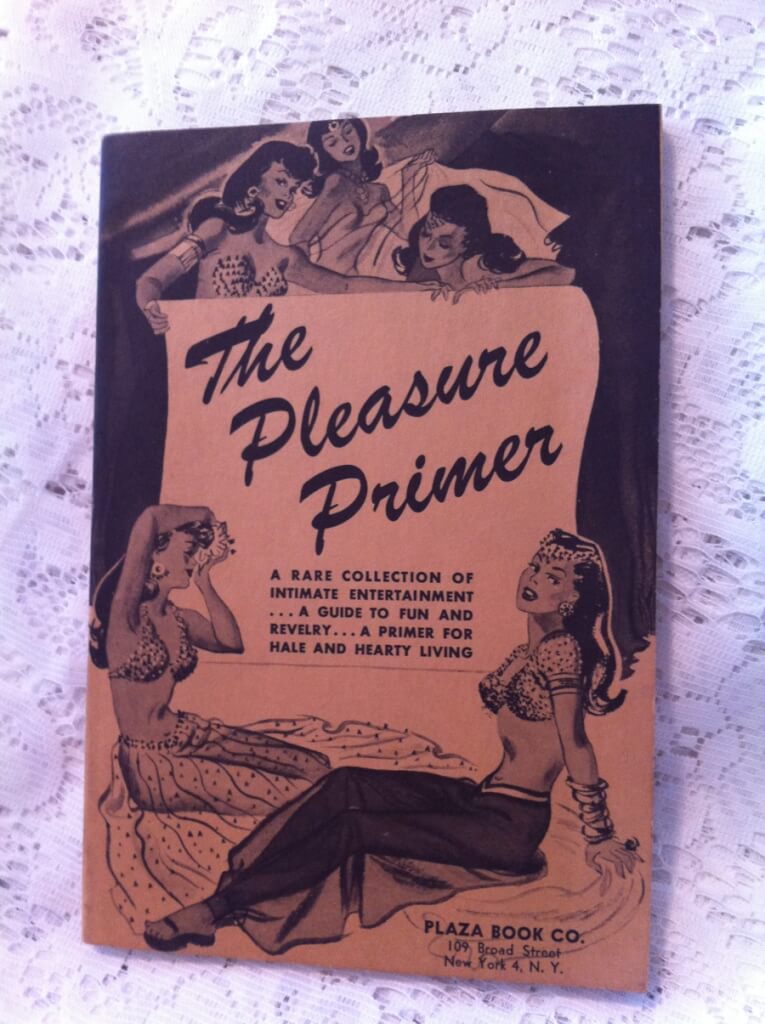 The Pleasure Primer, a rare collection of intimate entertainment...a guide to fun and revelry...a primer for hale and hearty living, Ed. Walter S. Keating, Illus. Alton Pickens (Plaza Book Company, New York, 1943) 8" x 5.5", 128pp., soft covers, near fine condition. From the ad: "No woman is safe (or really wants to be) when a man’s mind is in the bedroom. See the tempting, puffed-up featherbed to be despoiled! Hear the irrepressible squeals of pleasure! Those to whom bedtime has come to mean “bed and bored” will find “bed and better” . . . Thousands are now enjoying Rollicking Bedside Fun, and you will too, when you possess this ideal bedside companion. Here’s entertainment for open minds and ticklish spines. Here’s lusty, merry recreation for un-squeamish men and women. Here’s life with apologies to none. Collected, selected from the best there is, this zestful Primer is an eye-opener … YOU ARE INVITED TO EXAMINE THE PLEASURE PRIMER 10 DAYS AT OUR EXPENSE. IT IS GUARANTEED TO PLEASE OR YOUR PURCHASE PRICE WILL BE REFUNDED AT ONCE!" This is a collection of articles and reprints of stories by noted authors throughout history from Boccaccio to Twain.
The Pleasure Primer, a rare collection of intimate entertainment...a guide to fun and revelry...a primer for hale and hearty living, Ed. Walter S. Keating, Illus. Alton Pickens (Plaza Book Company, New York, 1943) 8" x 5.5", 128pp., soft covers, near fine condition. From the ad: "No woman is safe (or really wants to be) when a man’s mind is in the bedroom. See the tempting, puffed-up featherbed to be despoiled! Hear the irrepressible squeals of pleasure! Those to whom bedtime has come to mean “bed and bored” will find “bed and better” . . . Thousands are now enjoying Rollicking Bedside Fun, and you will too, when you possess this ideal bedside companion. Here’s entertainment for open minds and ticklish spines. Here’s lusty, merry recreation for un-squeamish men and women. Here’s life with apologies to none. Collected, selected from the best there is, this zestful Primer is an eye-opener … YOU ARE INVITED TO EXAMINE THE PLEASURE PRIMER 10 DAYS AT OUR EXPENSE. IT IS GUARANTEED TO PLEASE OR YOUR PURCHASE PRICE WILL BE REFUNDED AT ONCE!" This is a collection of articles and reprints of stories by noted authors throughout history from Boccaccio to Twain. -
Out of stock
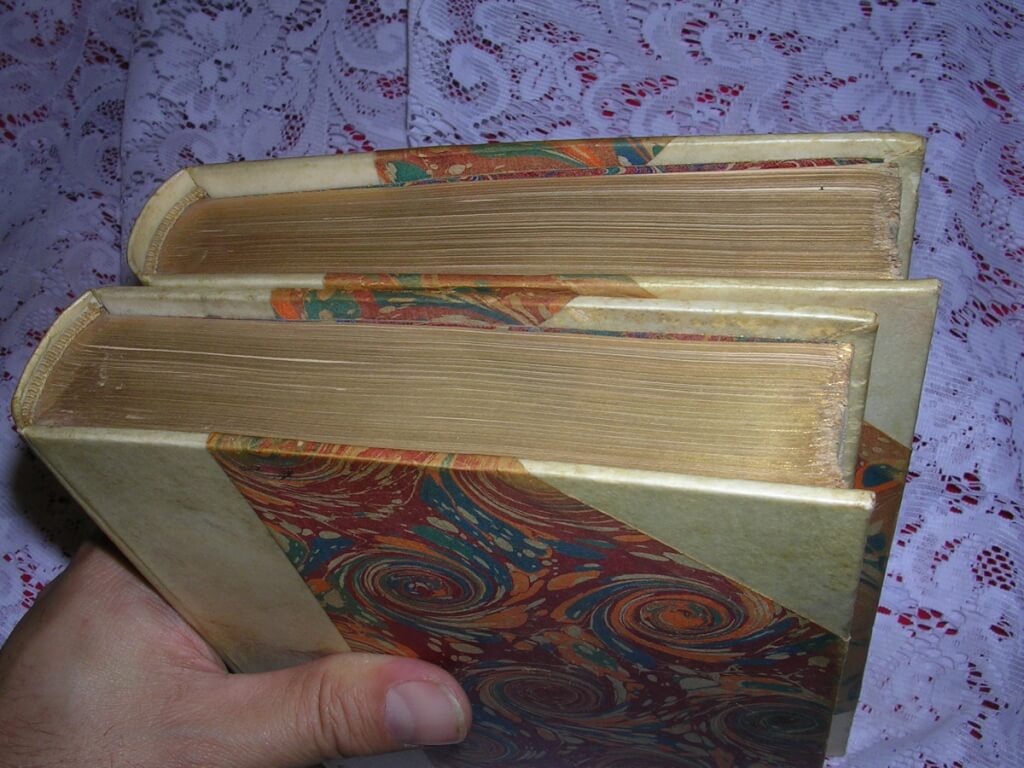
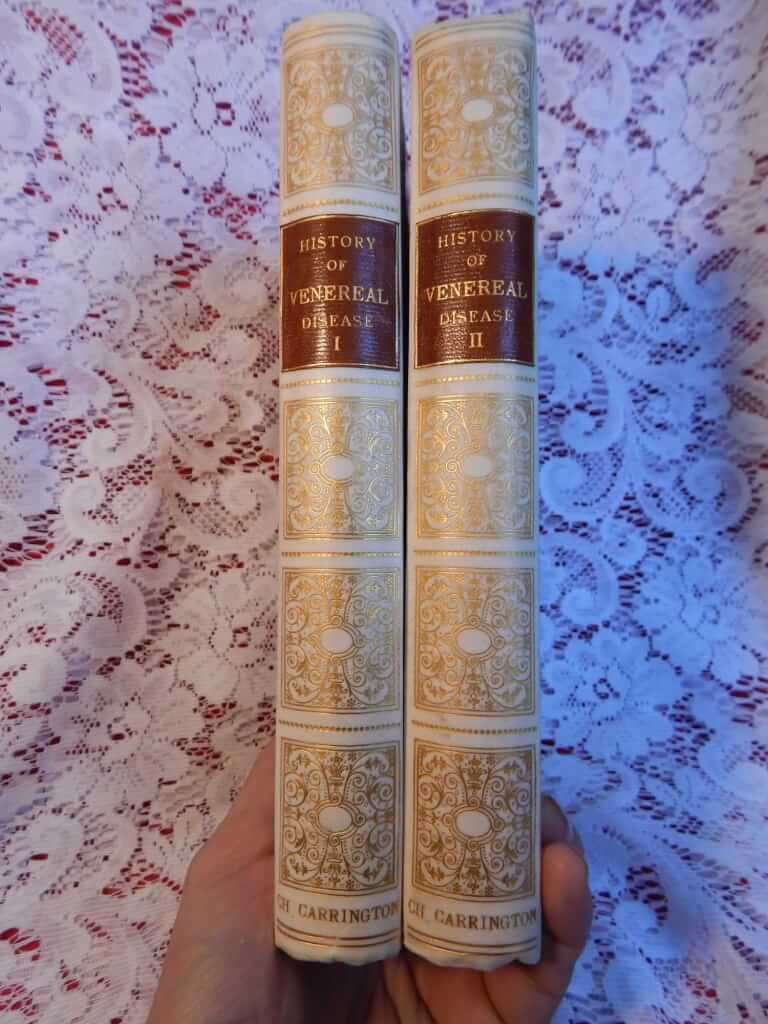 Dr. Julius Rosenbaum, trans. (from German) by "An Oxford M.A." (Charles Carrington, Paris, 1901) 9" X 5.5" 2 vol., xxxvi 297pp. (3 pages of ads), v. 342pp. Hardbound 1/2-bound in vellum over decorated boards, gilt lettering on spine, top edge gilt, other edges deckle. Marlbled endpapers. Very good condition, binding tight #84/500
Dr. Julius Rosenbaum, trans. (from German) by "An Oxford M.A." (Charles Carrington, Paris, 1901) 9" X 5.5" 2 vol., xxxvi 297pp. (3 pages of ads), v. 342pp. Hardbound 1/2-bound in vellum over decorated boards, gilt lettering on spine, top edge gilt, other edges deckle. Marlbled endpapers. Very good condition, binding tight #84/500 -

 The Photographer, (n.p. n.d.) 4.5" x 3", 8pp. pamphlet, stapled Tijuana bibles (also known as eight-pagers, bluesies, gray-backs, Jiggs-and-Maggie books, jo-jo books, Tillie-and-Mac books, and two-by-fours) were little pornographic comic books produced in the United States from the 1920s to the early 1960s.
The Photographer, (n.p. n.d.) 4.5" x 3", 8pp. pamphlet, stapled Tijuana bibles (also known as eight-pagers, bluesies, gray-backs, Jiggs-and-Maggie books, jo-jo books, Tillie-and-Mac books, and two-by-fours) were little pornographic comic books produced in the United States from the 1920s to the early 1960s. -
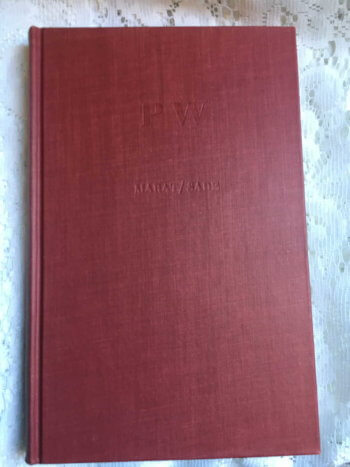
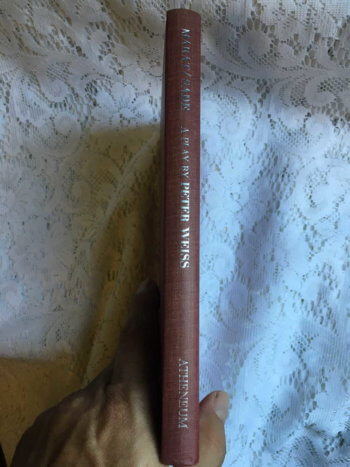 The Persecution and Assassination of Jean-Paul Marat as Performed by the Inmates of the Asylum of Charenton under the Direction of the Marquis de Sade, Peter Weiss, English version Geoffrey Skelton, verse adaptation Adrian Mitchell, introduction Peter Brook (Atheneum, New York, 1965, stated first american edition) 5.5"x8.5", x+117pp, hardbound, red boards, silver titles on spine, blind stamped title on cover, top-edge inked, near mint condition This is a 1963 play by Peter Weiss originally published in German under the title Die Verfolgung und Ermordung Jean Paul Marats, dargestellt durch die Schauspielgruppe des Hospizes zu Charenton unter Anleitung des Herrn de Sade, usually shortened to Marat/Sade. This is the first American version, published in 1965. A "play within a play", Merats/Sade incorporates dramatic elements characteristic of both Artaud and Brecht. It is a depiction of class struggle and human suffering that asks whether true revolution comes from changing society or changing oneself. Peter Ulrich Weiss (1916-1982) was a German writer, painter, graphic artist, and experimental filmmaker of adopted Swedish nationality. He earned his reputation in the post-war German literary world as the proponent of an avant-garde, meticulously descriptive writing, as an exponent of autobiographical prose, and also as a politically engaged dramatist. He gained international success with Marat/Sade, the American production of which was awarded a Tony Award and its subsequent film adaptation directed by Peter Brook. His "Auschwitz Oratorium," The Investigation, served to broaden the debates over the so-called "Aufarbeitung der Vergangenheit" (or formerly) "Vergangenheitsbewältigung" or "politics of history." Weiss' magnum opus was The Aesthetics of Resistance, called the "most important German-language work of the 70s and 80s.
The Persecution and Assassination of Jean-Paul Marat as Performed by the Inmates of the Asylum of Charenton under the Direction of the Marquis de Sade, Peter Weiss, English version Geoffrey Skelton, verse adaptation Adrian Mitchell, introduction Peter Brook (Atheneum, New York, 1965, stated first american edition) 5.5"x8.5", x+117pp, hardbound, red boards, silver titles on spine, blind stamped title on cover, top-edge inked, near mint condition This is a 1963 play by Peter Weiss originally published in German under the title Die Verfolgung und Ermordung Jean Paul Marats, dargestellt durch die Schauspielgruppe des Hospizes zu Charenton unter Anleitung des Herrn de Sade, usually shortened to Marat/Sade. This is the first American version, published in 1965. A "play within a play", Merats/Sade incorporates dramatic elements characteristic of both Artaud and Brecht. It is a depiction of class struggle and human suffering that asks whether true revolution comes from changing society or changing oneself. Peter Ulrich Weiss (1916-1982) was a German writer, painter, graphic artist, and experimental filmmaker of adopted Swedish nationality. He earned his reputation in the post-war German literary world as the proponent of an avant-garde, meticulously descriptive writing, as an exponent of autobiographical prose, and also as a politically engaged dramatist. He gained international success with Marat/Sade, the American production of which was awarded a Tony Award and its subsequent film adaptation directed by Peter Brook. His "Auschwitz Oratorium," The Investigation, served to broaden the debates over the so-called "Aufarbeitung der Vergangenheit" (or formerly) "Vergangenheitsbewältigung" or "politics of history." Weiss' magnum opus was The Aesthetics of Resistance, called the "most important German-language work of the 70s and 80s. -
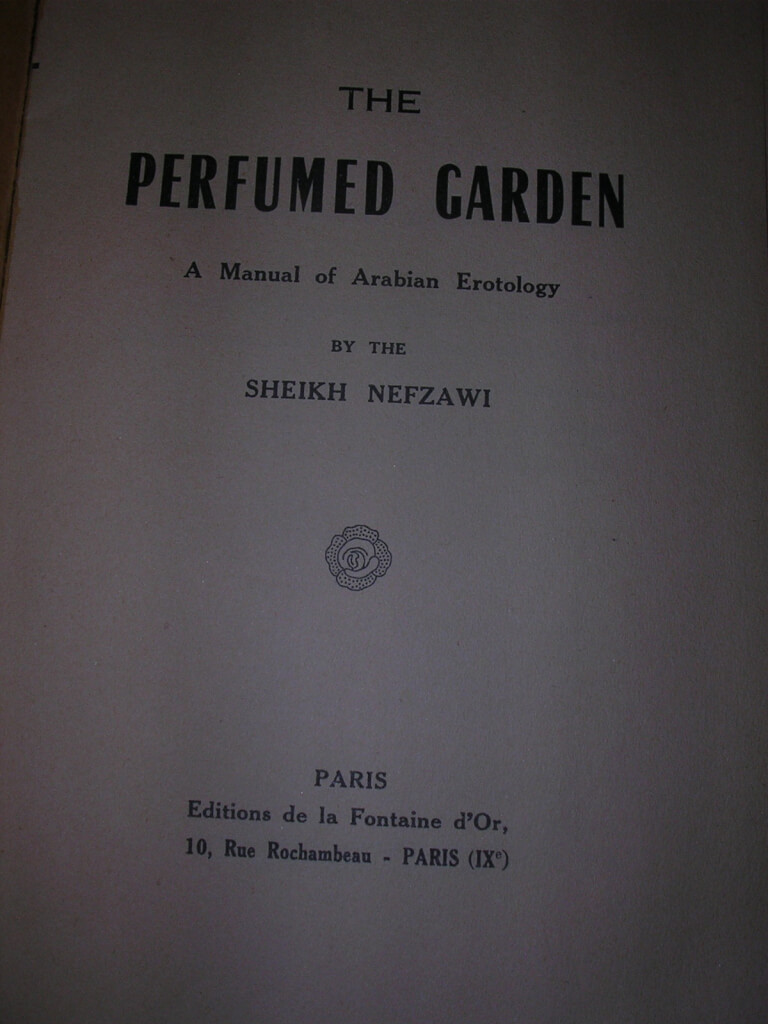
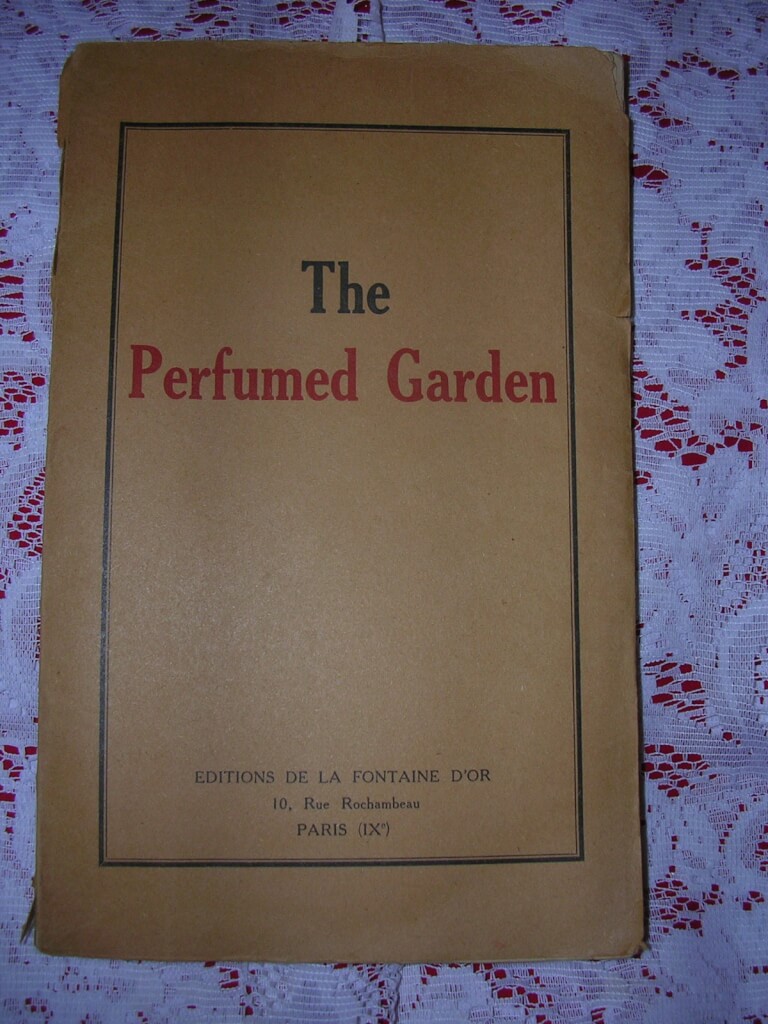 The Perfumed Garden: A Manual of Arabian Erotology, Sheikh Nefzawi (Editions de la Fontaine d'Or, Paris, 1900 [Imprimerie M. Laballery, Clamecy (Nievre) 1952]) 8.75" X 5.5", 189pp. original soft wrappers, good condition for age, spine detaching at top and bottom, some small rips and bumps. Back cover states "not to be sold in England or U.S.A" The Perfumed Garden of Sensual Delight is a fifteenth-century Arabic sex manual and work of erotic literature. The book presents opinions on what qualities men and women should have to be attractive, gives advice on sexual technique, warnings about sexual health, and recipes to remedy sexual maladies. It gives lists of names for the penis and vagina, has a section on the interpretation of dreams, and briefly describes sex among animals. Interspersed with these there are a number of stories which are intended to give context and amusement. Sheikh Nefzawi (Abu Abdullah Muhammad ben Umar Nafzawi), was born among the Berber Nefzawa tribe in the south of present-day Tunisia. He probably wrote The Perfumed Garden sometime during the twelfth century, compiled at the request of the Hafsid ruler of Tunis, Abū Fāris ʿAbd al-ʿAzīz al-Mutawakkil.
The Perfumed Garden: A Manual of Arabian Erotology, Sheikh Nefzawi (Editions de la Fontaine d'Or, Paris, 1900 [Imprimerie M. Laballery, Clamecy (Nievre) 1952]) 8.75" X 5.5", 189pp. original soft wrappers, good condition for age, spine detaching at top and bottom, some small rips and bumps. Back cover states "not to be sold in England or U.S.A" The Perfumed Garden of Sensual Delight is a fifteenth-century Arabic sex manual and work of erotic literature. The book presents opinions on what qualities men and women should have to be attractive, gives advice on sexual technique, warnings about sexual health, and recipes to remedy sexual maladies. It gives lists of names for the penis and vagina, has a section on the interpretation of dreams, and briefly describes sex among animals. Interspersed with these there are a number of stories which are intended to give context and amusement. Sheikh Nefzawi (Abu Abdullah Muhammad ben Umar Nafzawi), was born among the Berber Nefzawa tribe in the south of present-day Tunisia. He probably wrote The Perfumed Garden sometime during the twelfth century, compiled at the request of the Hafsid ruler of Tunis, Abū Fāris ʿAbd al-ʿAzīz al-Mutawakkil. -

 The Perfumed Garden: A Manual of Arabian Erotology, Sheikh Nefzawi (Editions de la Fontaine d'Or, Paris, 1900 [Imprimerie M. Laballery, Clamecy (Nievre) 1952]) 8.75" X 5.5", 189pp. full leather rebinding of the paperback (original covers included), fine condition, ribbin intact, Original back cover states "not to be sold in England or U.S.A" The Perfumed Garden of Sensual Delight is a fifteenth-century Arabic sex manual and work of erotic literature. The book presents opinions on what qualities men and women should have to be attractive, gives advice on sexual technique, warnings about sexual health, and recipes to remedy sexual maladies. It gives lists of names for the penis and vagina, has a section on the interpretation of dreams, and briefly describes sex among animals. Interspersed with these there are a number of stories which are intended to give context and amusement. Sheikh Nefzawi (Abu Abdullah Muhammad ben Umar Nafzawi), was born among the Berber Nefzawa tribe in the south of present-day Tunisia. He probably wrote The Perfumed Garden sometime during the twelfth century, compiled at the request of the Hafsid ruler of Tunis, Abū Fāris ʿAbd al-ʿAzīz al-Mutawakkil. A nice full leather copy of the work.
The Perfumed Garden: A Manual of Arabian Erotology, Sheikh Nefzawi (Editions de la Fontaine d'Or, Paris, 1900 [Imprimerie M. Laballery, Clamecy (Nievre) 1952]) 8.75" X 5.5", 189pp. full leather rebinding of the paperback (original covers included), fine condition, ribbin intact, Original back cover states "not to be sold in England or U.S.A" The Perfumed Garden of Sensual Delight is a fifteenth-century Arabic sex manual and work of erotic literature. The book presents opinions on what qualities men and women should have to be attractive, gives advice on sexual technique, warnings about sexual health, and recipes to remedy sexual maladies. It gives lists of names for the penis and vagina, has a section on the interpretation of dreams, and briefly describes sex among animals. Interspersed with these there are a number of stories which are intended to give context and amusement. Sheikh Nefzawi (Abu Abdullah Muhammad ben Umar Nafzawi), was born among the Berber Nefzawa tribe in the south of present-day Tunisia. He probably wrote The Perfumed Garden sometime during the twelfth century, compiled at the request of the Hafsid ruler of Tunis, Abū Fāris ʿAbd al-ʿAzīz al-Mutawakkil. A nice full leather copy of the work. -

 The Old Man Young Again, or Age-Rejuvenescence in the Power of Concupiscence, [Ibn-I Kemal Pasa] "literally translated from the arabic by an English Bohemian" (Charles Carrington, Paris, 1898 [first edition]) 9" X 5.5", xi 265pp, original soft covers, unread copy (most pages uncut on top, some uncut fore edge). Protective wraps. A very rare translation of an arabic how-to sex manual with much emphasis on aphrodisiacs with a forward by Carrington. Very few copies of this Carrington publication still exist. This is particularly unique because many pages remain uncut. I know of no other copies in this unread condition!
The Old Man Young Again, or Age-Rejuvenescence in the Power of Concupiscence, [Ibn-I Kemal Pasa] "literally translated from the arabic by an English Bohemian" (Charles Carrington, Paris, 1898 [first edition]) 9" X 5.5", xi 265pp, original soft covers, unread copy (most pages uncut on top, some uncut fore edge). Protective wraps. A very rare translation of an arabic how-to sex manual with much emphasis on aphrodisiacs with a forward by Carrington. Very few copies of this Carrington publication still exist. This is particularly unique because many pages remain uncut. I know of no other copies in this unread condition! -

 The Old Man Young Again, or Age-Rejuvenescence in the Power of Concupiscence, [Ibn-I Kemal Pasa] "literally translated from the arabic by an English Bohemian" (Charles Carrington, Paris, 1898 [first edition]) 5.25"x8.5", xi 265pp, hard bound in brown boards with gilt titles over red on spine, pages uniformly yellowed, good condition for age, binding good A very rare translation of an arabic how-to sex manual with much emphasis on aphrodisiacs with a forward by Carrington. Very few copies of this Carrington publication still exist.
The Old Man Young Again, or Age-Rejuvenescence in the Power of Concupiscence, [Ibn-I Kemal Pasa] "literally translated from the arabic by an English Bohemian" (Charles Carrington, Paris, 1898 [first edition]) 5.25"x8.5", xi 265pp, hard bound in brown boards with gilt titles over red on spine, pages uniformly yellowed, good condition for age, binding good A very rare translation of an arabic how-to sex manual with much emphasis on aphrodisiacs with a forward by Carrington. Very few copies of this Carrington publication still exist.


